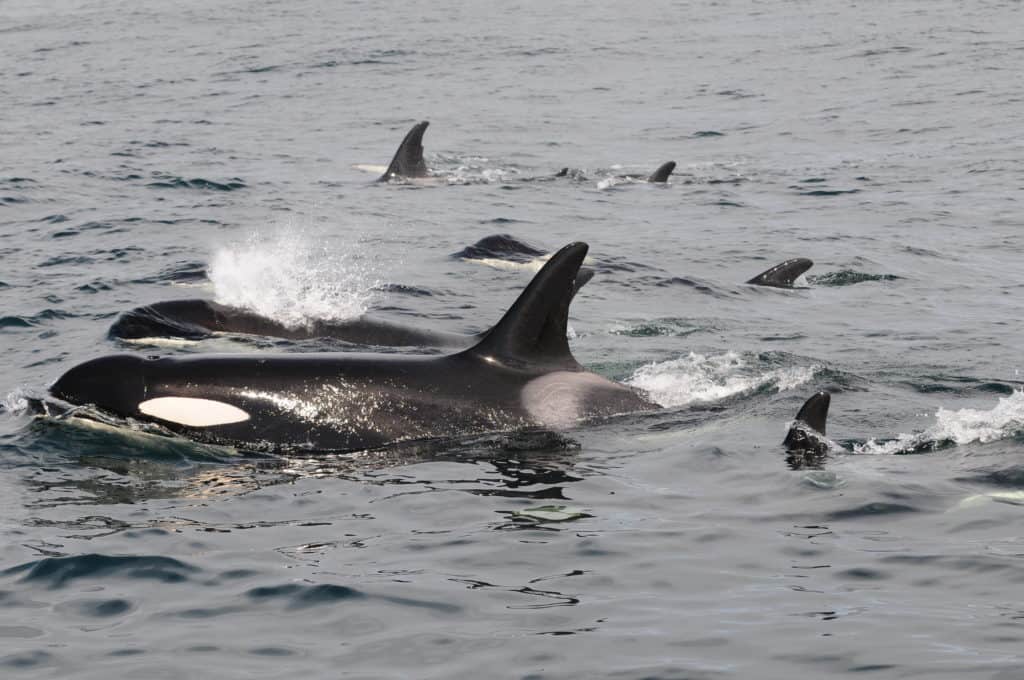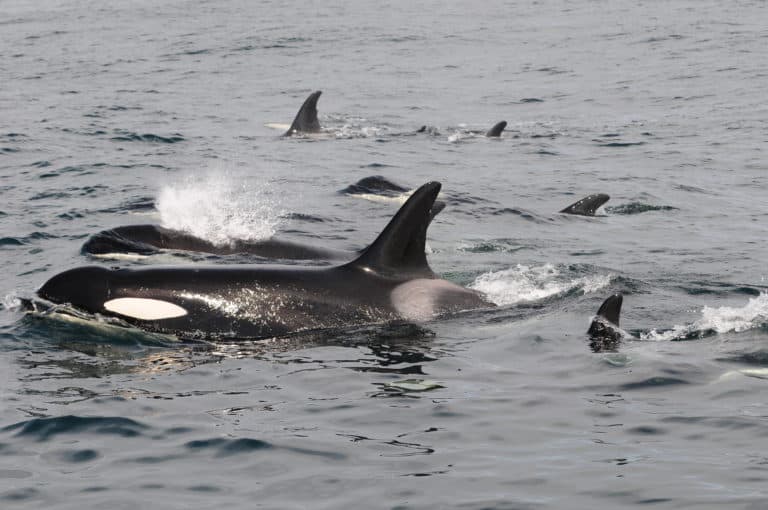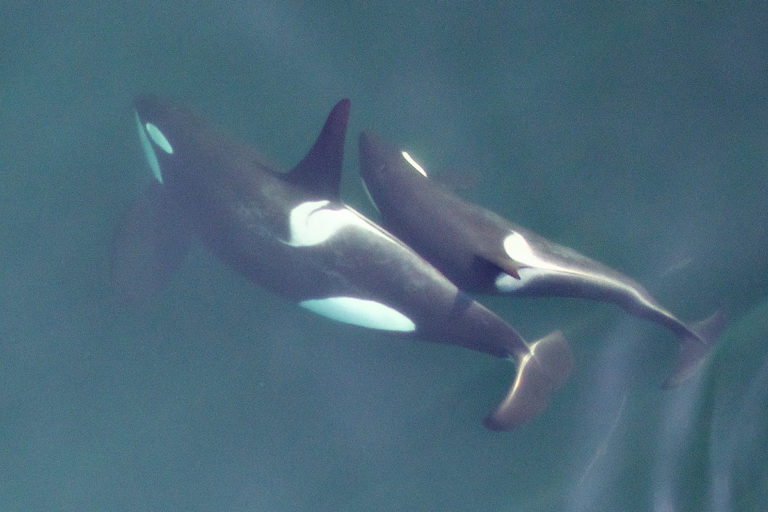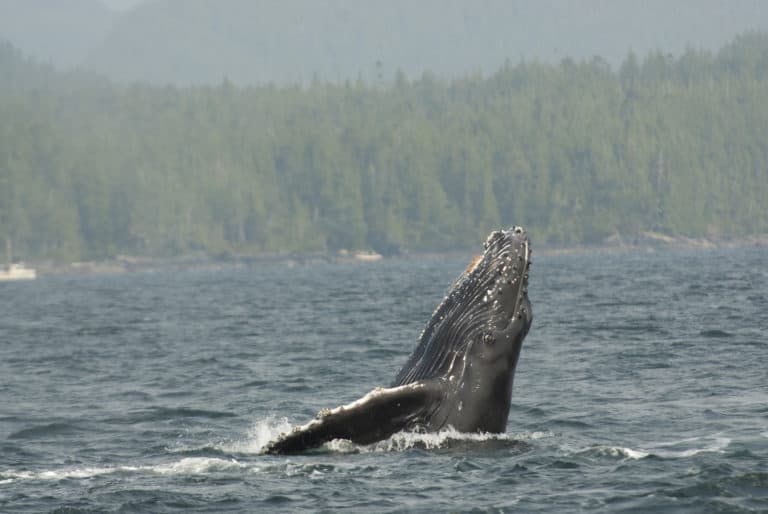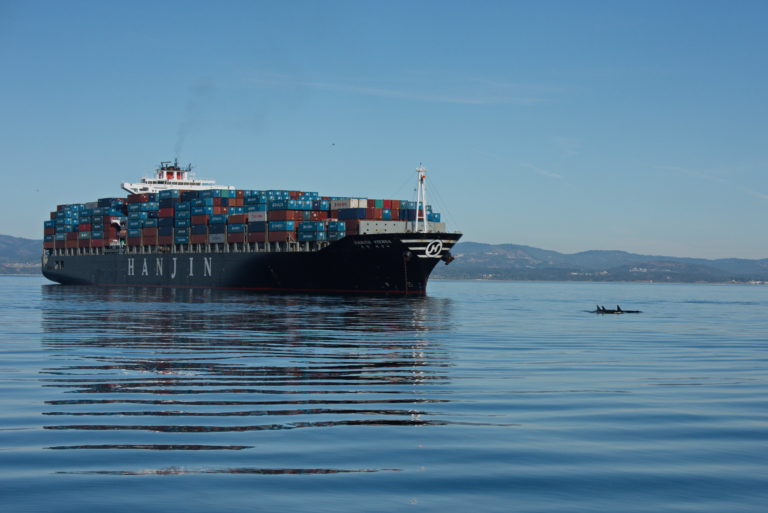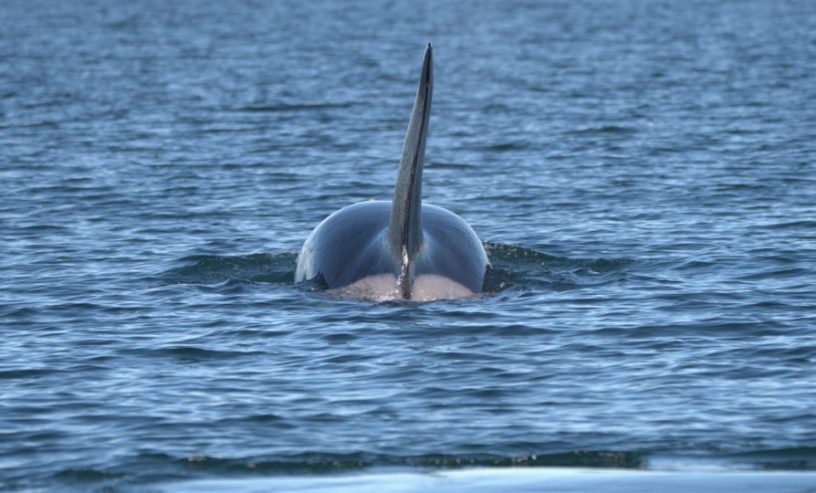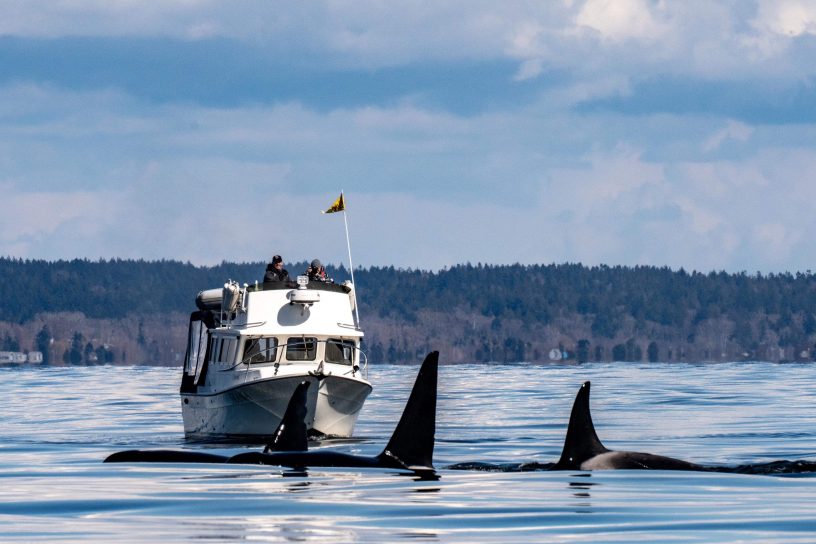Snowy Salish Sea Secrets: Ocean Wise Winter Whales Research
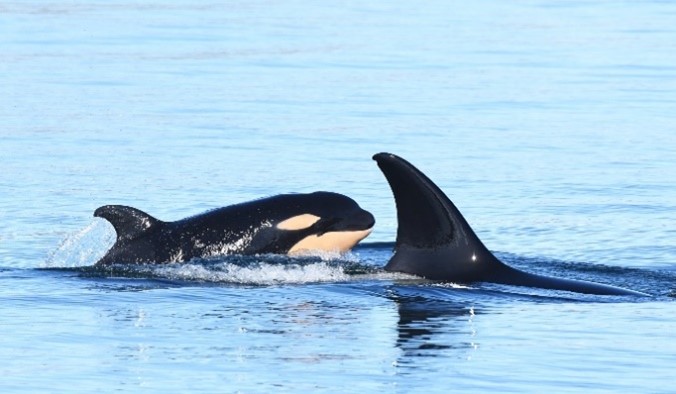
A Snowy Day at Sea during Ocean Wise Winter Whales Research
As Ocean Wise research vessel Skana returns to port from its final winter field expedition for the season, the team spots blows around Moresby Island and up into Swanson Channel.
“Mike, we got some blows up ahead” shouts Captain Gary Sutton.
It’s members of the endangered southern resident killer whale population, spread out across the channel.
“Grab the skimmer. We might be able to get a sample here,” he continues.
First Mate Mike Judson hastily grabs the pole and scurries down the side of the vessel and onto the bow. Before long, two individuals known as J19 “Shachi” and J46 “Star” start circling or “milling” in one area, a good indication that a predation event is happening.
“Scales! Right here!” Mike exclaims, as he dips the net into the water, scooping towards the glinting scales as they drift down into the dark seas below and shouts up to Gary on the bridge, “Got it!”
The team, both elated, quickly get the fish scales into ethanol to preserve them before being sent to Fisheries and Oceans Canada (DFO) for analysis. Once the sample has been secured, the team celebrates with the knowledge that although the scales themselves are smaller than a fingernail, these tiny fragments can have huge implications for conservation efforts.
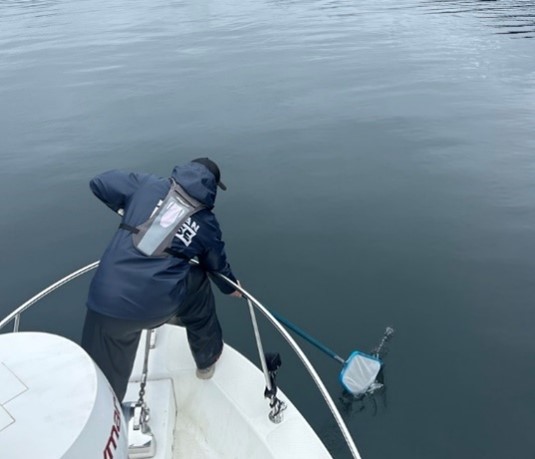
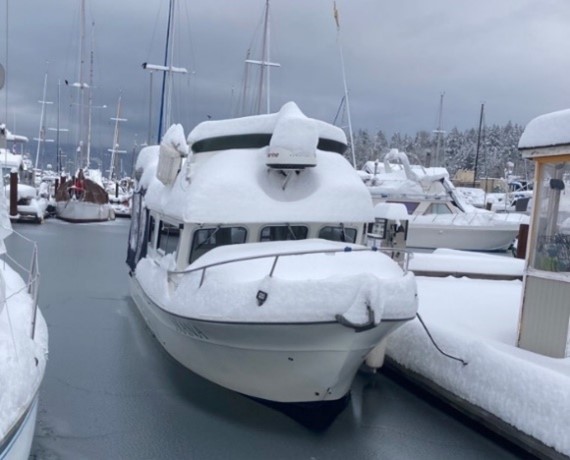
Ocean Wise Winter Whales Research
Winter is a pivotal time for many whale species. But unlike the summer, these colder months remain vastly understudied. As a result, many key questions about how these animals use different habitats during the winter months remain unanswered. To address these knowledge gaps, the Ocean Wise Whales Initiative launched a pilot winter whales research project in 2022, with the primary goal of documenting, sampling, and assessing winter distribution and foraging of four whale populations listed under Canada’s Species at Risk Act (SARA): southern resident killer whales, northern resident killer whales, Bigg’s (transient) killer whales, and humpback whales. These populations inhabit the coastal waters of British Columbia but have a particular affinity for the Salish Sea, which is not only a biologically rich ecosystem, but one that is subjected to multiple human influences. In the first year of the Salish Sea-focused project, many winter whale secrets were uncovered, however the team noted how much more there is to learn, and therefore this work was rolled over into an annual project. Fast forward to November 2023, while most were hunkering down for the winter, our team was prepping the boat, bundling up, and getting ready to start the second season of fieldwork.
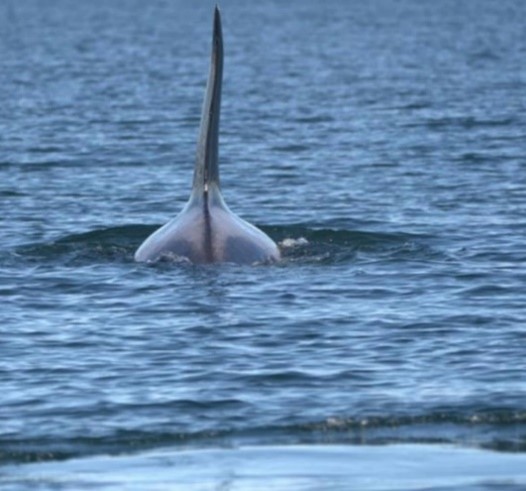
The Importance of a Salmon Scale
The research team couldn’t have asked for a better start. The first field day brought a “superpod” of southern resident killer whales! All 74 members of the population were present, and the team worked a large part of the day collecting environmental DNA (eDNA) samples from them. This novel technique, which involves collecting seawater samples from “flukeprints” (the calm patch of water created when a whale dives), aims to uncover the population demographics and health metrics of whales. In contrast to a biopsy dart, these eDNA methods are conducted without ever physically touching the animal. Ocean Wise’s goal is to standardize eDNA as a minimally invasive monitoring tool for killer whales and humpback whales to determine the sex of the individual, obtain individual genetic profiles, determine the persistence of whale DNA in the environment, and conduct skin microbiome screening for bacterial agents.
Documenting these endangered whales in the winter months is becoming increasingly more important. Not only does it fill a data gap in the recovery strategy for southern resident killer whales, but it also helps address questions regarding a shift in area usage by the population. The southern residents are spending notably less time in the Salish Sea during the summer months and are frequenting the area in the fall and winter. This is particularly true of J pod. We know that declining summer Chinook salmon stocks is the likely cause of this change. However, what we really want to know is what is bringing the whales here in the winter, and what areas are they spending most of their time?
The key to answering these questions can be found in prey and eDNA samples – hence Mike and Gary’s excitement in the story above! When salmon scales, collected during a feeding event, are sent to the Cetacean Research Program at DFO, several secrets are unlocked – including the species, the age of the fish, and what stock or river it came from. Armed with this information, the hope is that more targeted salmon conservation efforts can be made to protect the food that the resident killer whales so famously rely on.
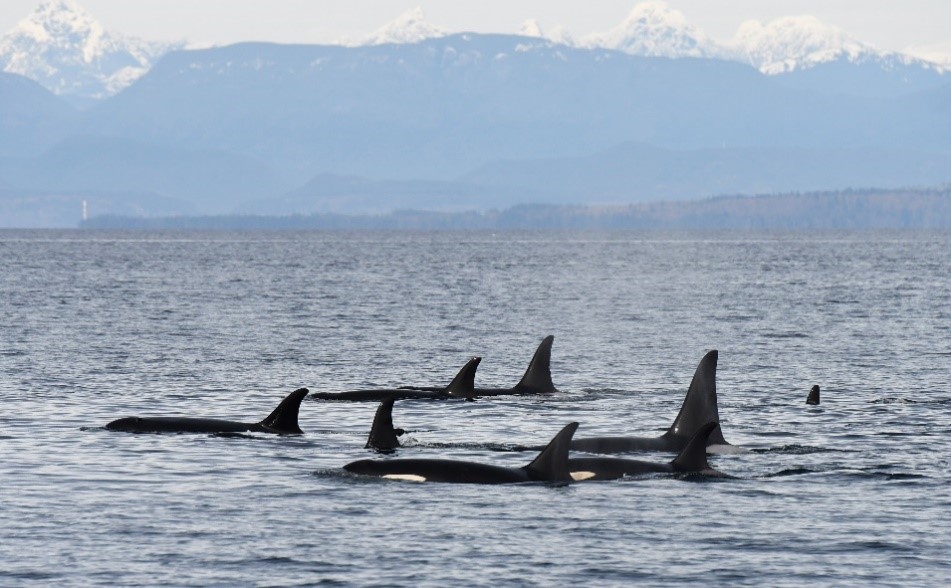
The Changing Populations of the Salish Sea
Ecosystems change over time with human impacts often playing a large role, especially in an area as densely populated as the Salish Sea. We see this impact on wild salmon stocks, caused by a myriad of human activities. This decline has affected the southern resident killer whale population, in particular.
However, there have been positive changes in the way humans interact with wildlife that have benefited marine mammal species that call the Salish Sea home. The abolishment of whaling in British Columbia in 1967 resulted in a major recovery of humpback whales in the area, particularly over the last decade. The end of government cull programs on pinnipeds has also led to increased seal and sea lion populations in the Salish Sea. This has resulted in more Bigg’s (transient) killer whales in the area. Unlike their fish-eating resident counterparts, these killer whales hunt marine mammals. These killer whales diverged from residents over 300,000 years ago. Year after year, their presence has increased in the Salish Sea because of this change in prey abundance. During our second year of winter field work, Bigg’s made up most of our sightings with 86 individuals encountered including two new calves (T036B4 and T100B3). During these encounters, we collected 45 eDNA samples with refined methods built off year one of the study. During that first year, the samples collected resulted in a 45% success rate in detecting killer whale DNA. With our new refined methodology in the second year, out preliminary results are showing a success rate of over 85%!

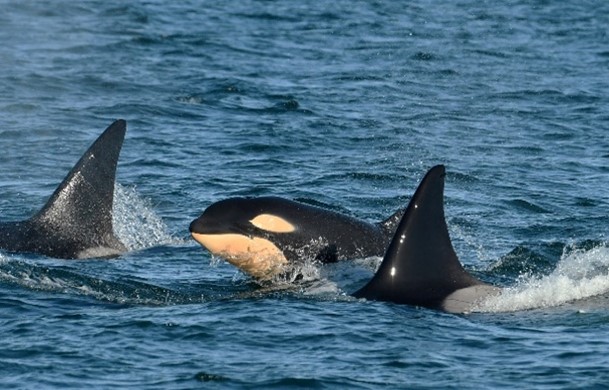
So, what have we learned or reaffirmed after our first two years of winter work?
- The Salish Sea is an important foraging area for the entire southern resident killer whale population in the winter, especially for J pod.
- The Salish Sea looks to be an important habitat for a few northern resident killer whales known as the A5 Pod, who reliably travel south to feed in Howe Sound during the winter months.
- Bigg’s killer whales continue to use the Salish Sea all year long. Anecdotally, it seems that the influx of sea lions, especially during the herring spawn, is a big focus for them. Target prey species will continue to be recorded and compared to summer.
- We documented the first case of a humpback whale feeding on herring around Hornby Island during the time of the spawn. There is a potential for conflict with the herring fishery if whales are also utilizing this area, especially if more humpbacks learn to take advantage of the feeding opportunity.
- eDNA can be a powerful conservation tool, and we’ve made big strides in our methodologies leading to increased effectiveness.
There are so many more snowy Salish Sea secrets to uncover, especially around winter prey for these at-risk species.
Protecting wildlife is a responsibility that falls on us all as individuals. We are honored to be an organization that helps to lead that charge and, with the generous funding support from Prince of Whales Whale Watching and North Island Kayak, we are excited about what we have accomplished thus far in our winter project. So, as the summer days grow shorter, we look forward to bundling up, firing up the engine on Skana, and continuing to explore the secret winter lives of whales in the Salish Sea.
You can help support our winter field efforts by adopting a killer whale or downloading the WhaleReport App to report your sightings of whales in British Columbia. Your reports send notifications to nearby shipping traffic to help prevent ship strikes and help inform our conservation efforts.
Posted August 19, 2024 by Rosemary Newton
